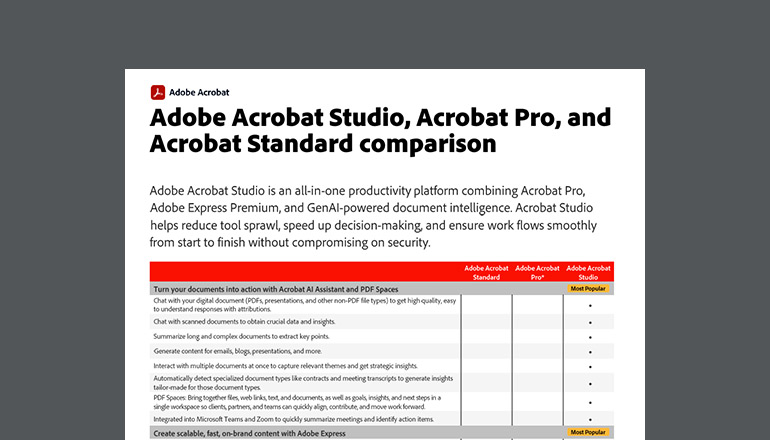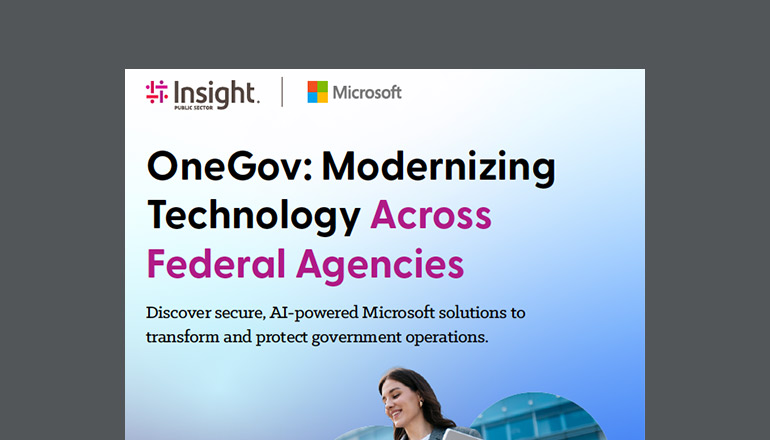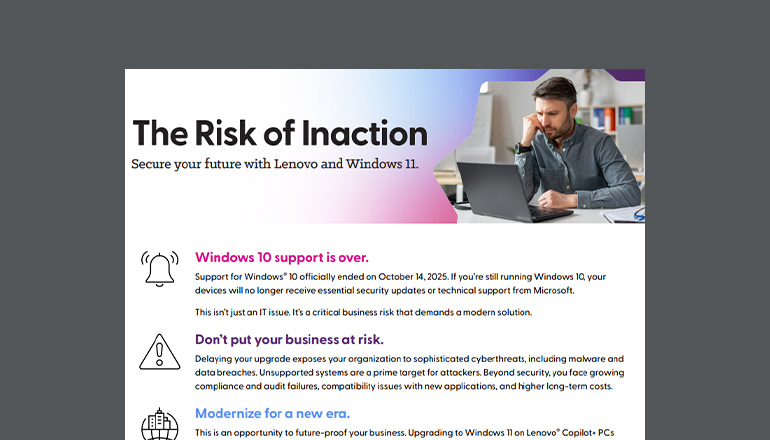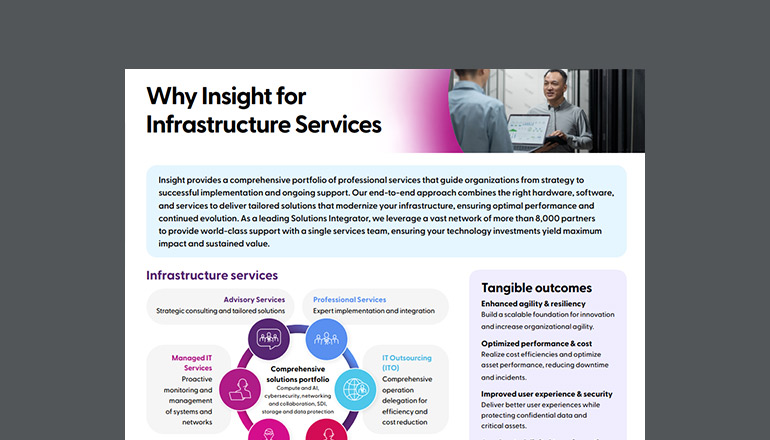Insight announcements Who Says Your Phone Can’t Be Your Work PC?
Device (or Desktop) as a Service is key to a work-from-anywhere (and on anything) world
By Hank Neveu / 25 May 2024

I have a confession to make. I haven’t touched a PC to do my work in two years. My name is Hank Neveu, and I’m the modern endpoint practice lead at Insight Canada. I’m involved with the delivery of physical and virtual endpoints across Canada. We set the stage. My team holds key accreditations globally for Insight — and, yes, I haven’t touched a PC to do my work in two years.
Instead, I work off my phone, leveraging Microsoft Azure Virtual Desktop and Windows 365 Cloud PC. I use the Operating System (OS) on it and also the desktop and applications that are streamed down from Insight. All things considered, the switch has been pretty seamless.
How to ‘MacGyver’ a laptop fix on vacation
It all started off innocently enough. I had an issue with my laptop that I couldn’t resolve. I was also on vacation in California with my family. Someone called me with an emergency, like it always happens when you take two weeks off. They needed me to log in and complete one or two things.
I even had my laptop there, but something had gone “boom” on it. I thought to myself, “Am I literally going to run out and buy a new laptop and then return it that afternoon? Am I going to use a hotel business center that I don’t trust?”
In the end, I did what I felt was logical. I plugged my phone into the TV with a $50 USB hub. I didn’t have a keyboard, but I just used the one on the phone. I had a quick call. I worked on some documents. It wasn’t pretty, but it did the trick.
I haven’t looked back since. I already had the keyboard and mouse to use once I got home. I told myself, when I travel again, I’m not going to haul an entire bag of equipment around with me. I’m also using it at home, having sent my laptop back to our IT team.
Demystifying the allure of endpoints
Now, I firmly believe PCs have use cases, obviously with exceptional latencies or even a complete absence of connectivity. Don’t get me wrong. However, we also need to prove this is viable. Actions speak louder than words. It’s hard to say how well this alternative option works with a straight face in a meeting when clients or partners ask whether I work off my phone instead of a PC.
I’m proud to say I do. So, “confession” isn’t as much the right word as “explanation” as to why my setup works for me. Earlier this year, while we were at the Microsoft Executive Briefing Center (EBC), I discussed it with clients who supply endpoints to countries all over the world. I heard countless tales of provisioning, shifting partnerships, technical skill sets, language requirements, import and export regulations and laws/customs. And that’s just to make things “work.”
There are a lot of phone plans in these countries. Guess what? Users get free phones with their plans and those phones can also run OSes and plug into monitors. They can plug into keyboards. The question became, “Why send endpoints at all?”
Other questions: What happens when they stop working? Do we have a data or security risk? Are we introducing additional risk? And, if so, what can we do to mitigate it while also making things easier for ourselves?
We have a commodity that’s given away as part of a standard phone plan. There’s inherent data security because nothing’s running on it, and if there’s no data, there’s nothing to compromise. You have complete management. You don’t need on-premises IT staff because there’s nothing to fix. If the phone breaks, get another one. As a supplier, you don’t need to ship anything, because it’s a Bring Your Own Device (BYOD) arrangement. It solves a lot.

DaaS: Device or Desktop as a Service?
When people hear “DaaS” in the context of a hybrid-work solution they’ll probably trend to Device as a Service. “Desktop” is equally valid. Insight offers solutions in both buckets. In fact, “Desktop” might also involve a physical endpoint as well as virtualized services. It can also be entirely virtual itself with a client-owned endpoint (a BYOD), like my phone in the above example.
I’m using and consuming our Insight environment on my personal device. It’s a marriage where I get the access I need to do my job and my employer doesn’t have to support my device. It’s win-win.
Now, there’s nothing wrong with DaaS with the “D” standing for “Device,” as long as we test that assumption over time. That’s arguably why Cyber Monday exists as a “holiday,” because it gave people the chance to go into the office and shop online when it wasn’t as common to have internet service at home. So, an employer providing devices was an expectation. Now, it’s rare not to have a smartphone. It can be less about the device and more about the desktop experience, as long as it’s secure.
No ‘one size fits all’ solution for hybrid work
I’m personally working off an application that only works on PCs, but I’m running it on a device that doesn’t even have an x86 processor in it. Any web-capable device can run my desktop or just my application or both. That’s how Insight does it today.
Organizations need to ask themselves if they really want to train workers on a device they’ve never seen before. It comes down to what makes employees the most productive. What makes the most sense to employers? Four out of five times, it’s going to be, “Can I do this using the cloud?” The first reason raised isn’t usually cost. It’s to shed non-core responsibilities.
If an organization delivers a core product or service, it’s also had to deliver everything else up to and including that product/service, even if it doesn’t serve the business directly. An example is updating firmware on a controller on the weekend. Those are the tasks businesses try to offload because they aren’t core to their business or to their customers’ businesses.
On-premises vs. cloud
Many who are considering something on premises either have done it before or are currently doing it. They may have data-security, sovereignty or resiliency concerns. You must understand what you need out of it.
If it’s just for the sake of going to the cloud or going back on premises, that’s a bad reason to change. What can I cut out of my dependency chain? Where can I focus my resources? That should be the main impetus. At the same time though, if you have an unavoidable cost situation or business case where something is better supported by one or the other, you really can’t lose.
When an organization already has a pure cloud-first initiative, there’s also a mindset of, “I don’t want to be subject to the supply chain.” What they’re actually saying is, “I don’t want to manage the hardware.” They’d rather just rent that capacity and focus on their business. So, a third party takes care of it instead, and the organization focuses on the desktop itself.
Back to my phone, I’m using my office suite. It’s on Windows. That’s what Insight manages. I’m not saying on-premises has hard and fast rules, but you usually manage more than that. There are different financial models. I might have ownership. I might have licensing costs. I might lease. I might also have a platform model. In the cloud, it’s very rare you’re going to worry about ownership, hardware platform version and patch management, etc.
However, there’s also the flexibility to say I can choose one and dip into the other. I can leverage cloud-first, but then integrate it seamlessly with an on-premises experience. So, I wouldn’t say it’s driven by cost but capability. And, especially in this day and age, agility — adaptability.
We must move away from thinking about round pegs and square holes. A smartphone can easily transform into a makeshift workstation. Or, in my case, an everyday one. Working off a phone isn’t a problem. It can be the solution depending on the situation, the needs of the organization — and the end user.




